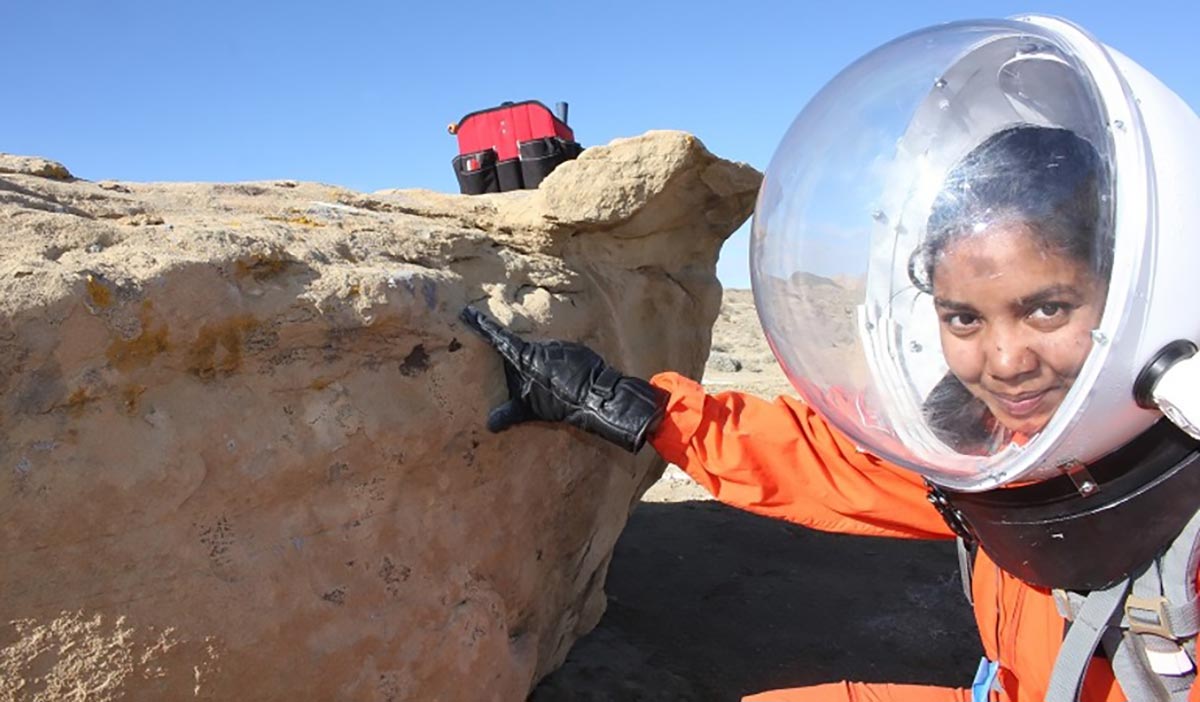
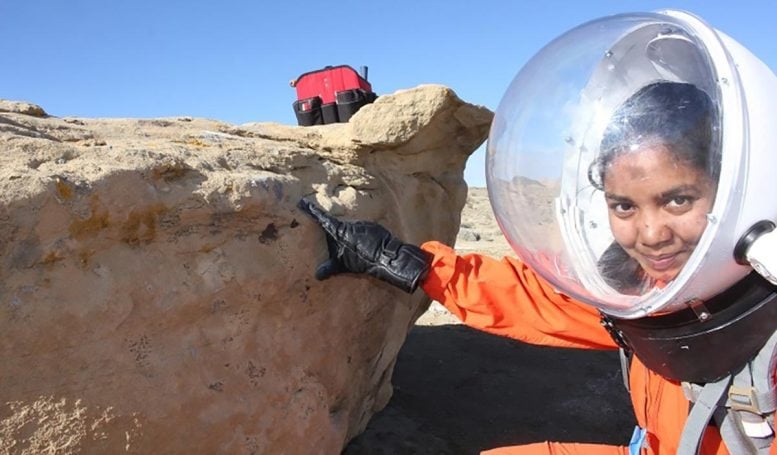
Research at Mars analog sites in Utah and Nunavut focuses on lichen diversity, helping to predict lichen survival on Mars and aiding our understanding of these organisms both on Earth and potentially in space.
Lichens are remarkably resilient organisms that can survive on a vast array of surfaces, from rocks and trees to bare ground and buildings. These composite organisms, fungal and photosynthetic partners joined into a greater whole, are found on every continent and almost certainly every landmass on planet Earth; some species have even survived exposure to the exterior of the International Space Station.
The hardy nature of lichens has long interested researchers studying what life could survive on Mars and the astrobiologists studying life on Earth as an analog of our planetary neighbor. In the deserts surrounding two Mars analog stations in North America, lichens comprise such an essential part of the local ecosystems that they inspired a biodiversity assessment with a unique twist: a collections-based inventory conducted during a simulated mission to Mars.
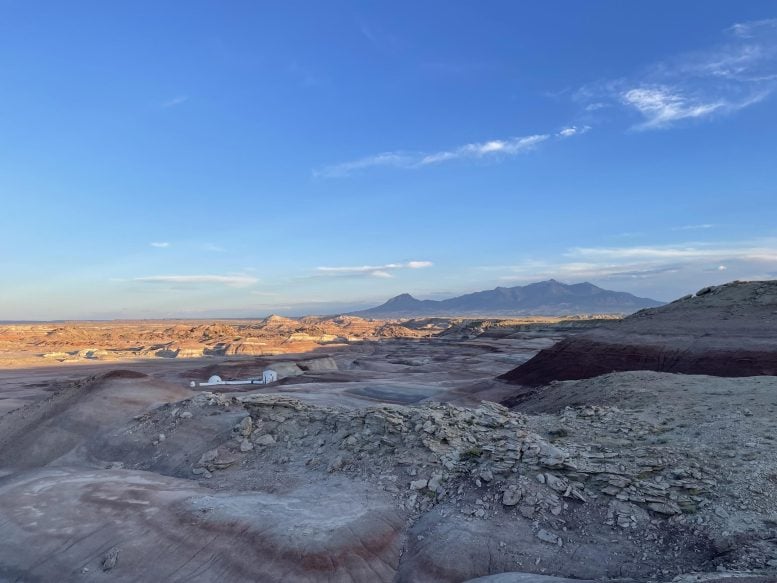
Simulated Mars Missions and Biodiversity Studies
The Mars Desert Research Station in Utah, USA (on Ute and Paiute Territory), and the Flashline Mars Arctic Research Station in Nunavut, Canada (in Inuit Nunangat, the Inuit Homeland) are simulated Martian habitats operated by The Mars Society, where crews participate in dress rehearsals for crewed Martian exploration.
While learning what it would take to live and work on our planetary neighbor, these “Martians” frequently study the deserts at both sites, often exploring techniques for documenting microbial life and their biosignatures as a prelude to deploying these tools and methods off-world.
These studies are enhanced by a comprehensive understanding of the ecosystems being studied, even if they are full of Earthbound life. During the Mars 160 – a set of twin missions to both Utah and Nunavut in 2016 and 2017 – the research team undertook a floristic survey of the lichen biodiversity present at each site.
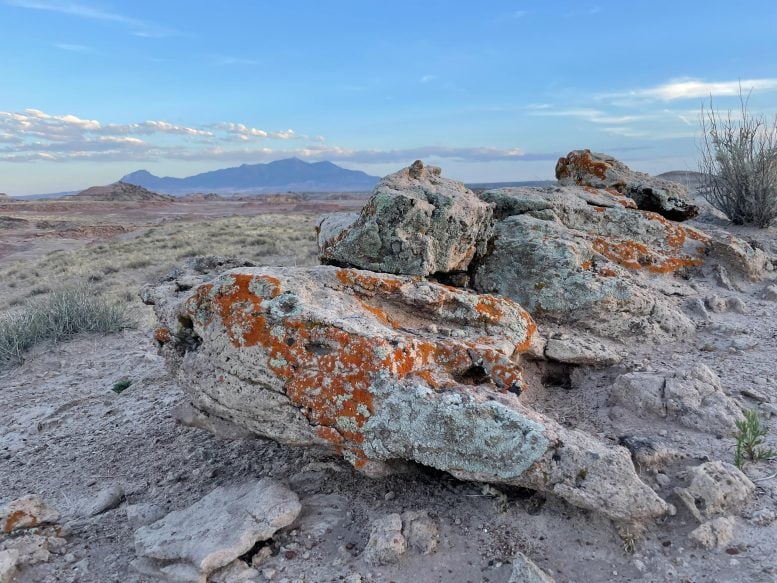
Collecting and Identifying Lichens in Martian Analogs
During simulated extra-vehicular activities, Mars 160 mission specialists wearing simulated spacesuits scouted out various habitats at both stations, seeking out lichen species growing in various microhabitats. Collecting over 150 specimens, these samples were “returned to Earth” and identified at the National Herbarium of Canada at the Canadian Museum of Nature.
Through morphological examination, investigations of internal anatomy and chemistry, and DNA barcoding, “Mission Support” identified 35 lichen species from the Mars Desert Research Station and 13 species from the Flashline Mars Arctic Research Station.
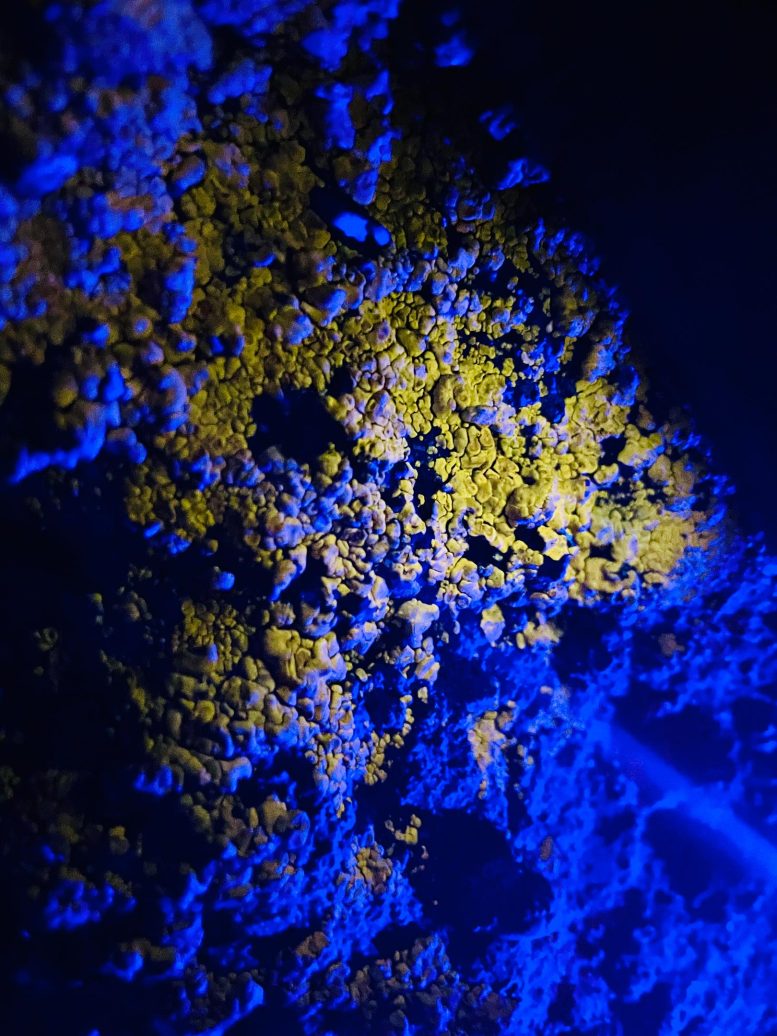
Contributions to Lichenology and Astrobiology
These species, along with photographs and a synopsis of their identifying characteristics, are summarized in a new paper recently published in the open-access journal Check List. This new annotated checklist should prove useful to future crews working at both analog research stations while also helping Earthly lichenologists better understand the distribution of these fascinating organisms, including new records of rarely reported or newly described species from some of Earth’s most interesting and otherworldly habitats.
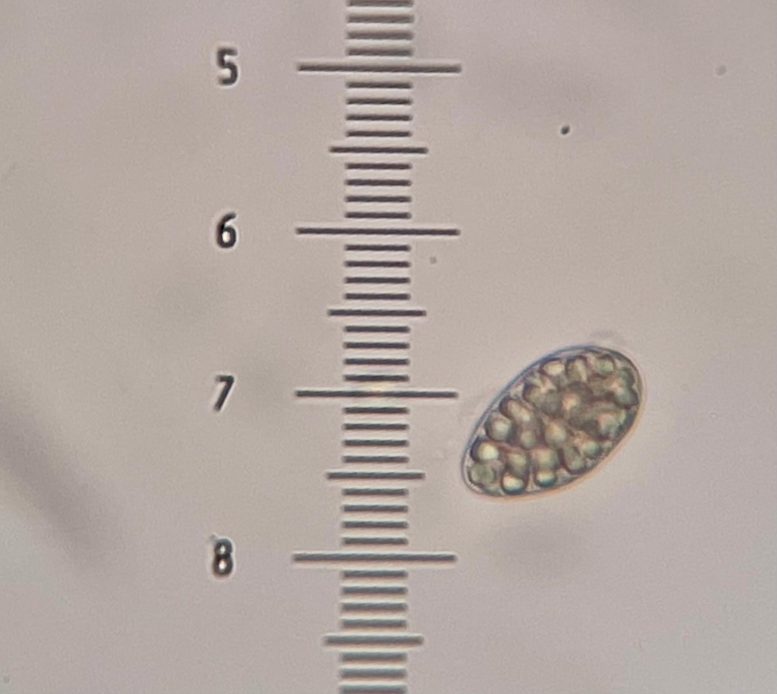
Reference: “An annotated checklist of the lichen biodiversity at two Mars analog sites: The Mars Desert Research Station (Utah, USA) and The Flashline Mars Arctic Research Station (Nunavut, Canada) recorded during the Mars 160 Mission” by Paul C. Sokoloff, Anushree Srivastava, R. Troy McMullin, Jonathan Clarke, Paul Knightly, Anastasia Stepanova, Alexandre Mangeot, Claude-Michel Laroche, Annalea Beattie and Shannon Rupert, 8 October 2024, Check List.
DOI: 10.15560/20.5.1096